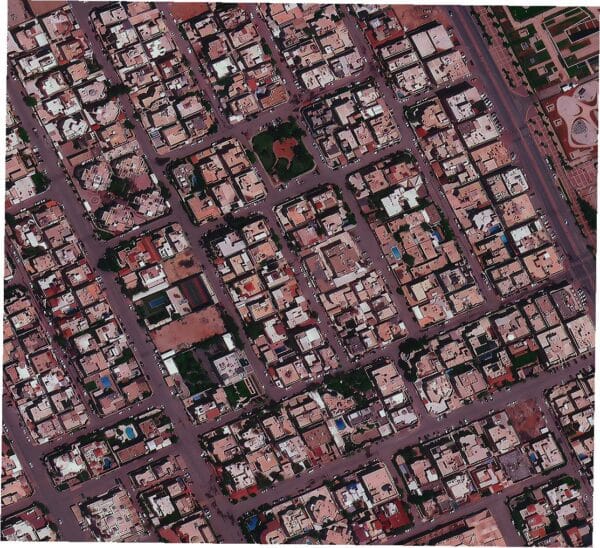
Understanding Synthetic Aperture Radar (SAR) Satellite Imagery
What is Synthetic Aperture Radar (SAR)? When people think of satellite images, they often picture colorful photos taken from space.
Home » Success Stories » Innovative EcoDrone Mapping Initiative
The EcoDrone Mapping Initiative, spearheaded by Green Horizon Environmental Solutions, is a pioneering project set to deploy advanced drone technology for comprehensive environmental monitoring and conservation efforts. This initiative falls within the category of Environmental Monitoring & Conservation, aiming to leverage the agility and high-resolution imaging capabilities of drones to map, analyze, and monitor diverse ecosystems.
One of the primary challenges faced by the EcoDrone Mapping Initiative involves navigating the complex regulatory environment surrounding drone operations in various jurisdictions. The project’s broad geographic scope means that it must comply with a wide array of legal restrictions that govern airspace, privacy, and environmental protection across different regions. These regulations can vary significantly, posing logistical hurdles in planning and executing drone flights. Additionally, the initiative must ensure that its operations do not disturb wildlife or sensitive habitats, necessitating careful planning and coordination with local environmental authorities to mitigate potential impacts.
Technical challenges also present significant obstacles for the project. Ensuring the drones are equipped with the latest imaging and sensory technology to capture high-quality, actionable data across diverse ecosystems requires substantial investment and expertise. Moreover, the data collected from these drone flights will generate vast amounts of information, demanding sophisticated data processing and analysis capabilities. Handling, storing, and analyzing this data to extract meaningful insights poses a substantial challenge, requiring advanced software and skilled analysts. Weather conditions and the ruggedness of certain terrains further complicate drone operations, making it difficult to obtain clear, consistent imagery and data, thereby impacting the project’s overall effectiveness and efficiency.
To address the regulatory and logistical challenges associated with the EcoDrone Mapping Initiative, the project team plans to engage in early and continuous dialogue with regulatory bodies and local communities across the project’s operational areas. By actively seeking permits and working within the framework of local laws, the initiative aims to ensure compliance and minimize disruptions to both communities and wildlife. This approach includes scheduling flights during times that are least likely to disturb local fauna and incorporating feedback from environmental scientists to adapt flight paths as needed. Additionally, the project will leverage partnerships with local environmental agencies and conservation groups, facilitating smoother operations through shared expertise and resources, thereby enhancing the project’s acceptance and impact on the ground.
On the technical front, the initiative is set to overcome challenges through the adoption of cutting-edge drone technology and sophisticated data analysis tools. Investing in drones equipped with advanced sensors and cameras will enable the collection of high-quality data across various environments, while custom-developed AI algorithms will streamline data processing, making it feasible to handle large volumes of information efficiently. To tackle the issue of adverse weather conditions and difficult terrain, the project will deploy drones capable of withstanding such environments, ensuring reliable data collection. Furthermore, training sessions for drone operators and analysts will be conducted regularly to keep the team abreast of the latest technological advancements and operational best practices, ultimately ensuring the project’s success in achieving its environmental monitoring and conservation goals.
The EcoDrone Mapping Initiative achieved remarkable success, mapping over 10,000 square kilometers of varied ecosystems, thus significantly advancing environmental conservation efforts. By providing detailed data on land topography, vegetation, and wildlife habitats, the initiative identified critical conservation areas, regions experiencing deforestation, and zones impacted by illegal mining. This enabled the formulation of focused conservation and restoration strategies. Moreover, the creation of a comprehensive digital repository of high-resolution imagery and maps has become an invaluable tool for researchers, policymakers, and conservationists, facilitating the continuous monitoring of ecosystem changes and supporting informed decision-making in environmental protection efforts.
Leveraging cutting-edge drone technology and sophisticated data analytics, the initiative not only met its goals but also set a precedent for future environmental monitoring projects. It underscored the effectiveness of innovative technological solutions in enhancing our understanding and preservation of natural environments. The project’s outcomes have had a direct impact on policy development and conservation tactics, demonstrating the critical role of advanced technology in combating environmental degradation and advocating for the sustainable management of natural resources, thereby marking a significant stride towards mitigating the effects of climate change.
The EcoDrone Mapping Initiative has brought forth a multitude of benefits, notably enhancing the capability for precise and efficient environmental monitoring and conservation. The detailed mapping and analysis provided by the project have been instrumental in identifying vulnerable ecosystems and the effects of human activities on these areas. This level of insight is critical for developing targeted interventions to protect biodiversity, prevent deforestation, and manage natural resources more sustainably. Furthermore, the project has significantly contributed to the scientific community by offering a rich repository of high-resolution environmental data. This resource fosters ongoing research and innovation in environmental science, promoting a deeper understanding of ecological dynamics and facilitating the development of strategies to mitigate climate change impacts.
Beyond its direct environmental impacts, the initiative has also demonstrated the practical applications of drone technology in addressing global challenges, serving as a model for similar projects worldwide. By showcasing how drones can be used to gather data in inaccessible areas, the project underscores the potential of technology to revolutionize conservation efforts. Additionally, it has fostered partnerships between governmental bodies, NGOs, and the private sector, highlighting the importance of collaborative approaches in environmental stewardship. The EcoDrone Mapping Initiative not only contributes to immediate conservation goals but also paves the way for innovative solutions to environmental monitoring, ensuring the resilience and health of ecosystems for future generations.
Our sales team will be happy to provide you more information about this case study and how it can meet your business needs.

What is Synthetic Aperture Radar (SAR)? When people think of satellite images, they often picture colorful photos taken from space.

Understanding the differences between free satellite maps and powerful commercial satellite data for your needs in 2025. The world is constantly being watched from

Finding satellite imagery Australia free can be very helpful! This guide shares the best satellite maps that cost nothing to use. Looking at

The Plaza, Radisson Blu Hotel, Dubai Deira Creek, Dubai UAE

+971 58 885 3151

Specialized in satellite data, drone products, industrial products & supply chain management.
© Copyright 2025 by XrTech Group. All rights reserved.